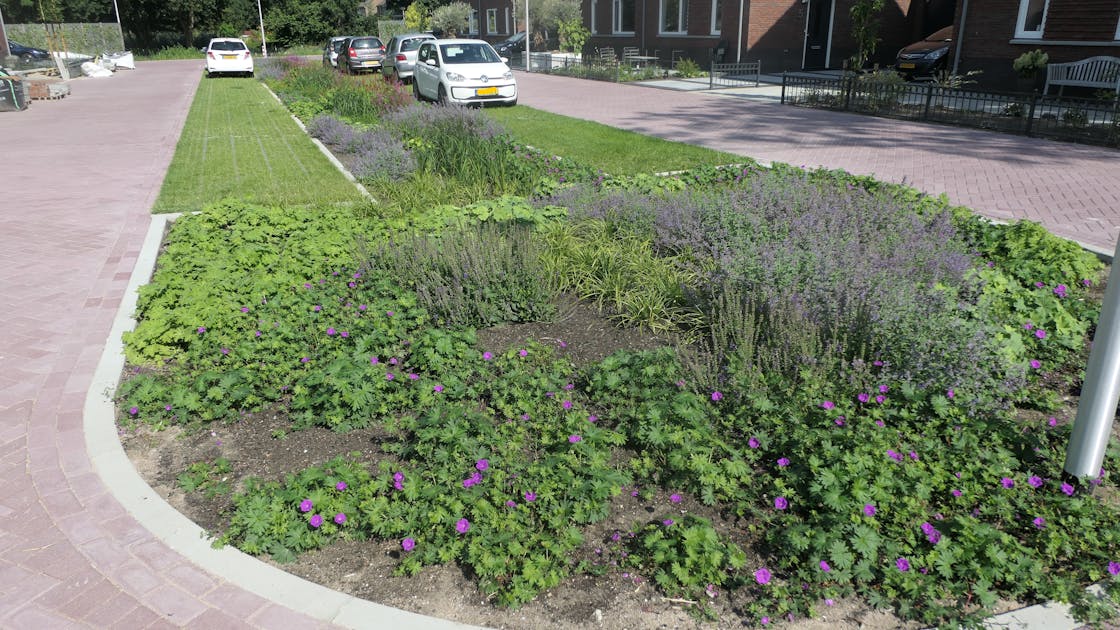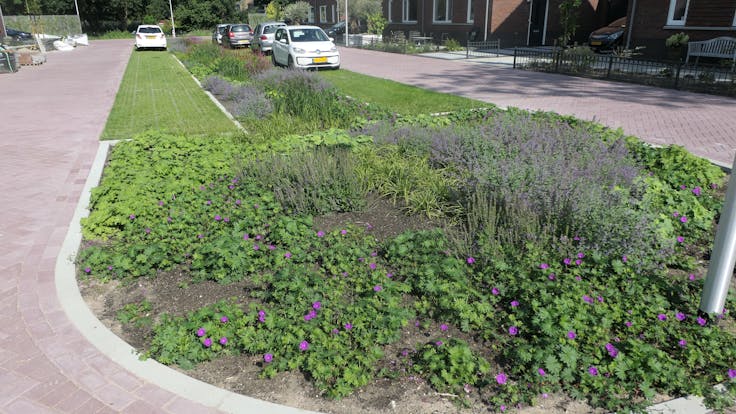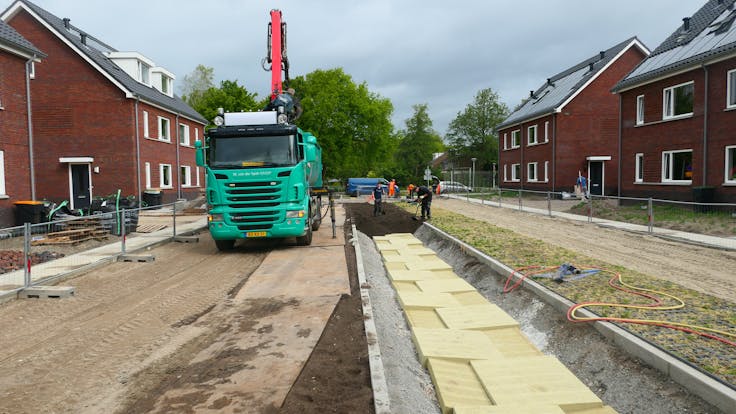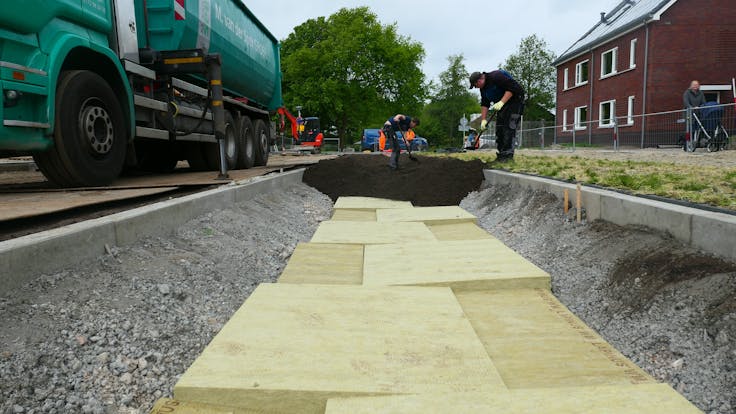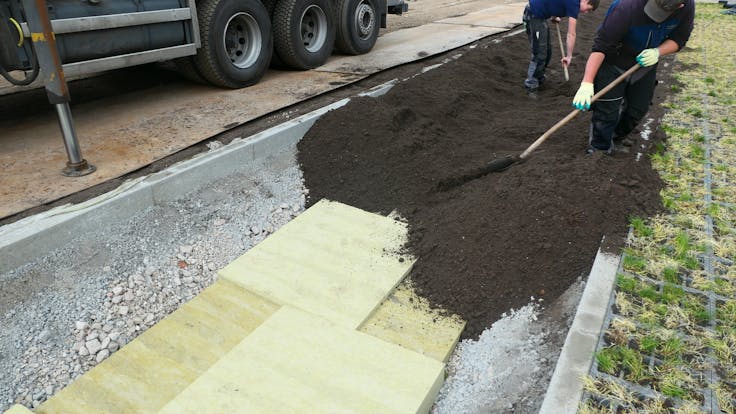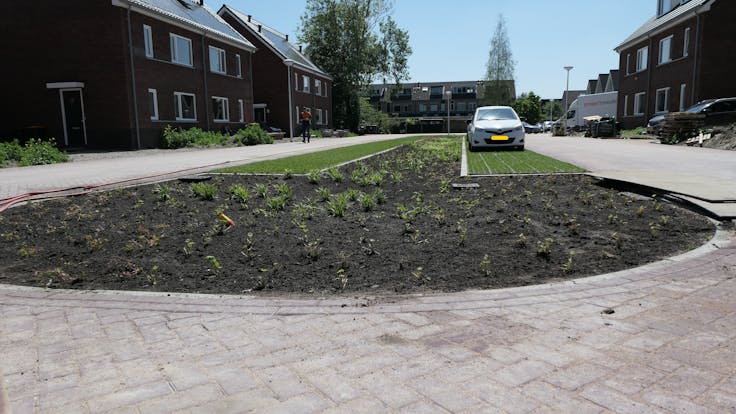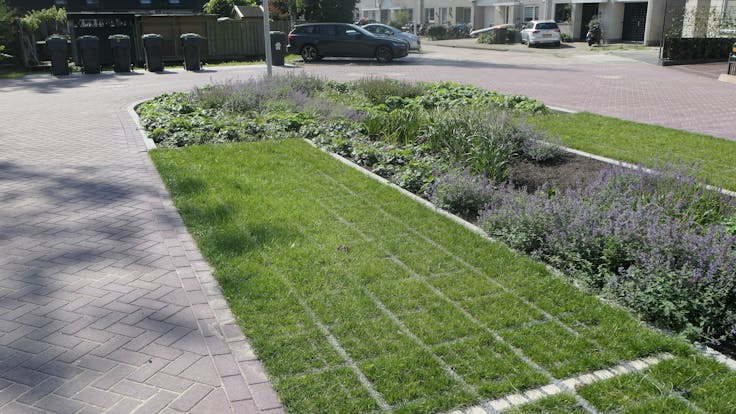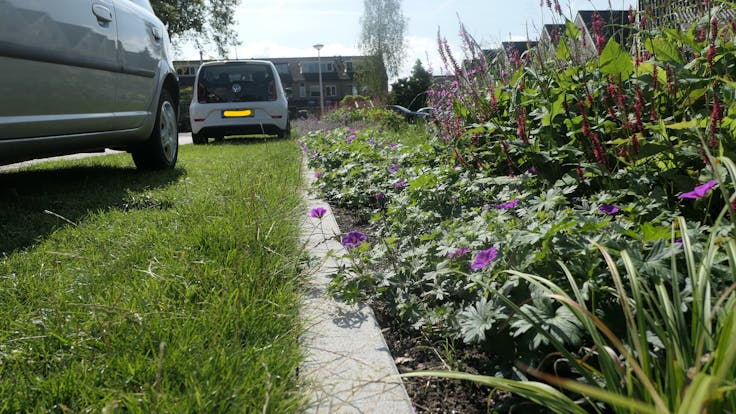Rockflow is a highly flexible and effective system for collecting, retaining and infiltrating rainwater. It consists of stone wool elements that are fully circular by nature. Rockflow is used in more and more cities in the context of climate adaptation to prevent flooding. The system can also retain rainwater as a buffer for drier periods. These two functions - infiltration and retention - were recently combined in a single system for the first time. Thanks to a request from Zoeterwoude.
Project Manager Paul Geluk was looking for a system that could buffer heavy downpours and allow the water to infiltrate into the ground. But he wanted a solution that could also act as a water reservoir for perennials in a bioswale during dry periods. These diametrically opposed requirements called for an innovative solution. In the end, a capillary fracture proved to be the secret to realising the required solution with Rockflow.
Climate-adaptative project
Zoeterwoude promotes itself as a climate-adaptive municipality. New projects, therefore, focus on including measures within the context of this framework. Rockflow had already been chosen as the infiltration system for the new Klaverweide construction project (ten semi-detached houses with garage). For this location, with a high groundwater level and moderate permeability of the soil, a Rockflow buffer has been designed that can catch a rain shower of 100 mm over an area of 1300 m² in one hour. A bioswale was planned for on top of this system.
